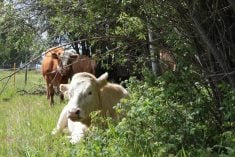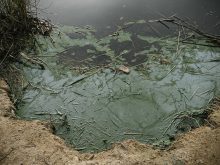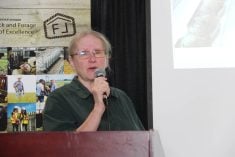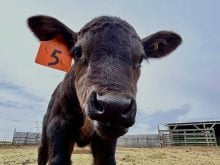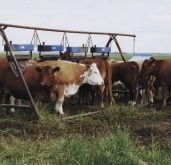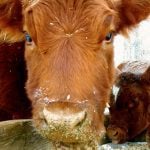This year’s theme for Animal Health Week in October was a good one for the veterinary profession as it blended the idea of “one health.” If we protect the health of our animals and the environs in which they reside, it ultimately protects everyone’s health.
This is especially true in farm animal production as our farms are impacted by many different forms of wildlife, from the herds of deer and elk to the migratory birds which are a pleasure to see but can also carry disease, or even the deer mouse carrying hantavirus. Biosecurity must always be at the forefront of our thinking. That includes a proper vaccinations program as well as other biosecurity measures, and reaching out for help or advice if wildlife populations get too one-sided.
Wildlife officers and biologists need to be aware of what we do and we all need to work together when conflicts arise. In the past few years, there have been many issues we have dealt with where often the producer, wildlife officer and veterinarian have needed to discuss a problem and arrive at the best overall solution.
Read Also
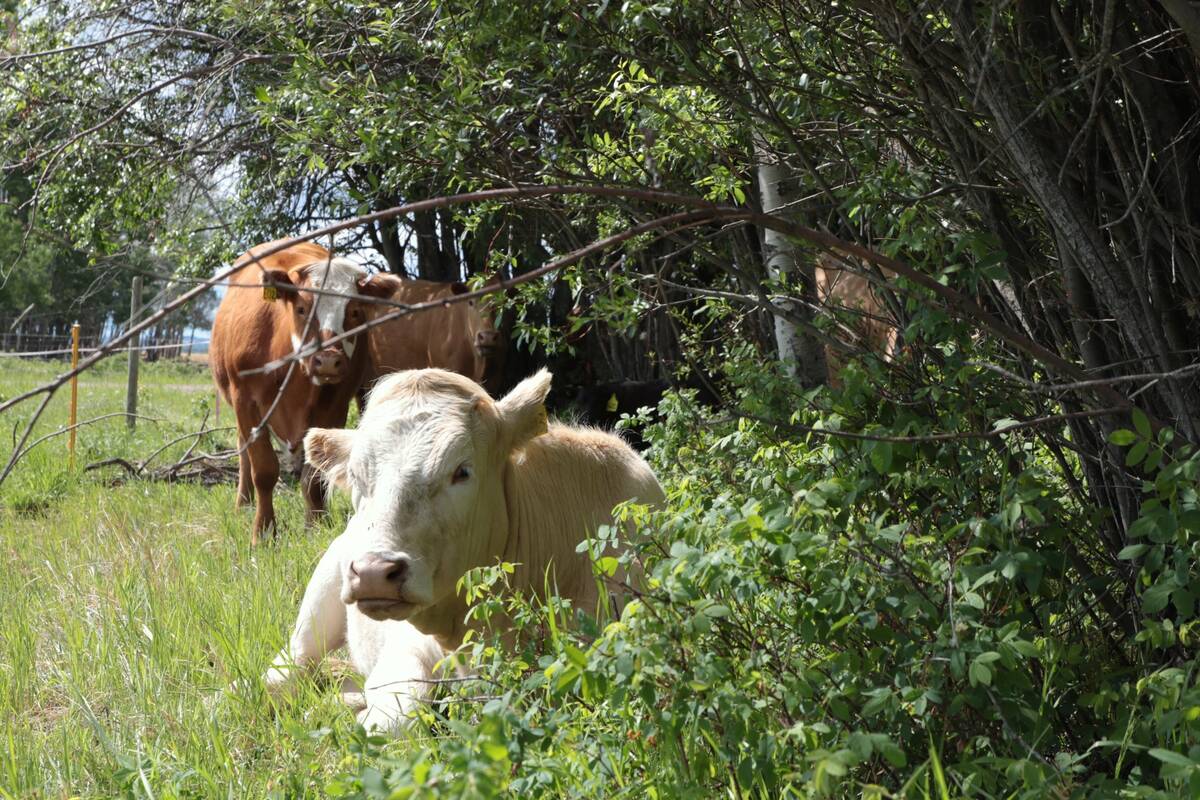
A best-practices review for your beef cattle herd
Veterinarian Roy Lewis provides a variety of tips on herd health, animal welfare and immunization for western Canadian cow-calf operations, both commercial and purebred.
For example, currently in the news is avian influenza, which can be carried by migratory birds and subsequently infect poultry. Depopulation of infected poultry barns can have a devastating economic and emotional effect on the producers, and in some cases could result in food shortages.
Even though I don’t practise veterinary medicine as much anymore, I still get a few questions about the risk of diseases spreading between wildlife and domestic species.
The risk of disease spread
Disease spread is possible for some diseases such as Johne’s disease, certain types of influenza or the reportable ones such as anthrax, tuberculosis or brucellosis. Again, producers have the right to raise concerns if wildlife populations get too high. With high populations, stress levels go up and the potential to shed or spread contagious diseases increases. With increased stress comes the increased shedding of organisms. Outbreaks can occur if livestock in relatively close confinement are exposed to these organisms.
With any of these diseases, we also have to consider the risk of zoonotic (animal to human) spread. Also, we don’t always consider that zoonotic transmission can go the other way. This happened with COVID-19, especially on mink farms where the mink contracted COVID from infected humans. The disease would spread amongst the mink and then be spread back to the humans.
We are fortunate that many infections with bacteria, viruses or parasites are “species-specific,” meaning that one species generally gets that specific virus bacteria or parasite, but it remains there.
That is why cattle can pasture with sheep or horses and most infections or parasite transmissions cannot occur between them. Horses, donkeys and zebras can get the same parasitic species because they are members of the equine family. Cattle and bison can also spread parasites between themselves and give each other the more common diseases such as mannheimia or mycoplasma pneumonia.
All cloven-hoofed animals can share clostridial diseases, anthrax or even tuberculosis. Recently there has been more emphasis on protecting our borders from the introduction of hoof and mouth disease. One of the four main points in this year’s Animal Health Week theme is that when importing and exporting animals, let’s follow the specific requirements of each country.
The rules are there to protect everyone, including ourselves. When travelling, answer any customs questions correctly. I still think they need to use disinfectant mats for shoes at airports and other points of entry as a visual clue that we are trying to keep foreign animal and other diseases out of the country.
While most farmers and ranchers appreciate wildlife, the rule of moderation can apply. If elk or migratory birds are destroying crops and farm livelihood, that is not sustainable. When wildlife populations get too high it also increases the risk of disease transmission.
Likewise, the general public and fellow producers need to recognize and respect biosecurity protocols many farms have in place. This could involve wearing clean clothes, wearing coveralls and boots or not even thinking of visiting a farm during calving season. Always carry a pair of disposable booties with you and respect areas where access is restricted.
It’s also suggested we develop a habit of best wellness practices for both livestock and humans. For example, adopt a rotational grazing system and low-stress cattle handling practices with cattle. On the human side, getting exercise helps to reduce stress. And for all creatures, sound nutrition promotes a healthy immune system.
While there is no guarantee, and many things are beyond our control, these are all points which might help to prevent the next pandemic.



